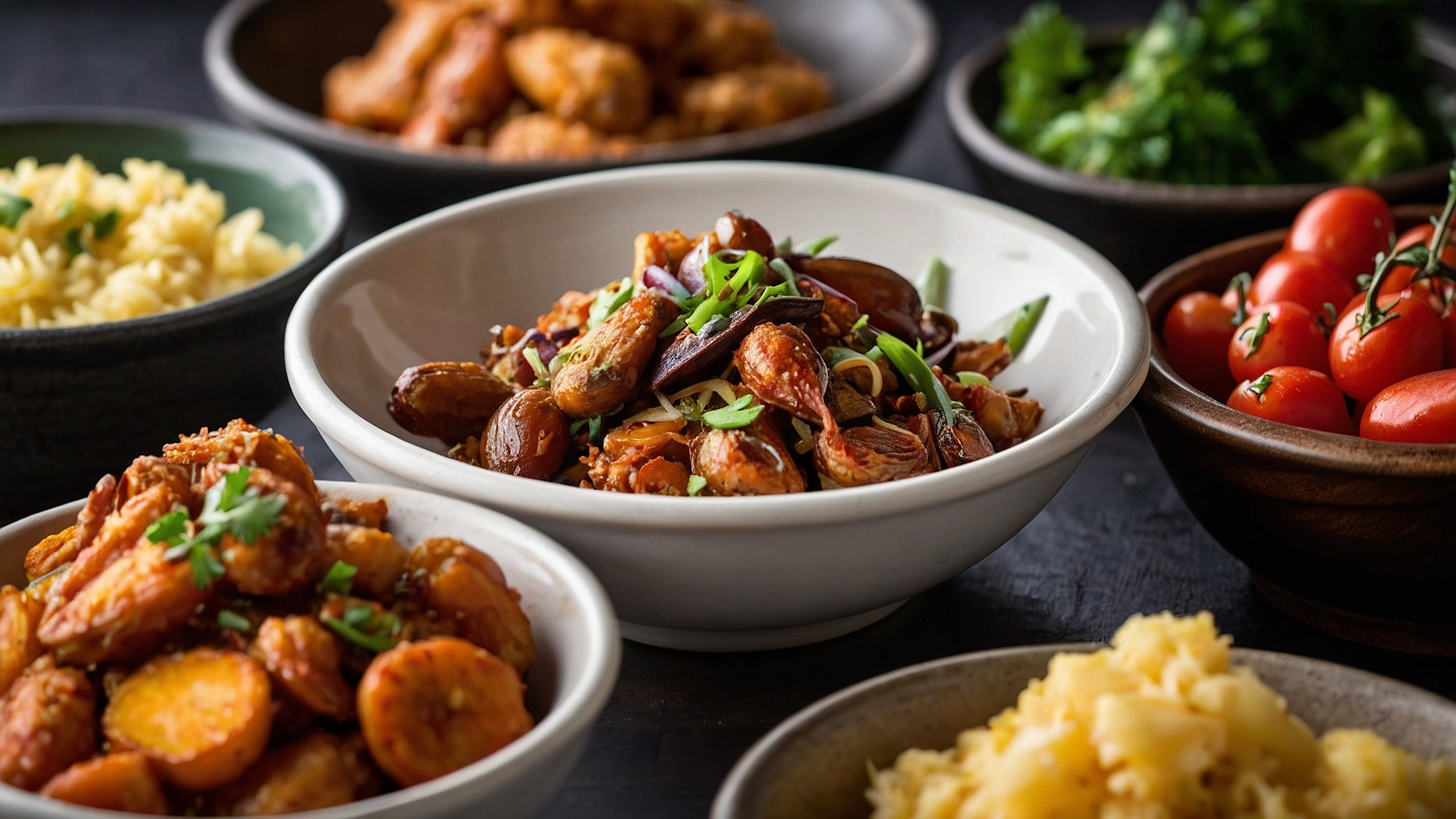Food Drink
Discover the Timeless Longevity and Health Benefits of Honey

Introduction
Honey has been prized for thousands of years as both a sweet treat and a healing remedy. From ancient Egyptian tombs to modern kitchens, this golden liquid has stood the test of time. Today, researchers confirm what our ancestors knew: honey offers remarkable health benefits. It can boost immunity, support digestion, and even help wounds heal. In this article, we’ll uncover the secrets behind honey longevity, explore its rich nutritional profile, and share simple ways to add this natural sweetener into your daily routine. Let’s dive into the timeless world of honey.
A History of Honey Longevity
People have harvested honey since at least 8,000 BCE, leaving jars in Egyptian tombs that remain edible today. Honey’s long shelf life comes from its low moisture and acidic pH, which prevent bacteria from growing. Beekeepers in ancient Greece and Rome also used honey to treat wounds and preserve food. Through the Middle Ages, honey was a staple in European kitchens and apothecaries. Its reputation for healing and lasting forever has made honey a symbol of health across many cultures. Today, we blend this ancient wisdom with modern science to understand honey’s true value.
Nutritional Profile of Honey
Each tablespoon of honey delivers about 64 calories, mainly from natural sugars like fructose and glucose. Yet it also supplies small amounts of:
- Vitamins: B vitamins (niacin, riboflavin, pantothenic acid) that support energy production.
- Minerals: Trace elements such as calcium, iron, magnesium, and potassium.
- Antioxidants: Flavonoids and phenolic acids that protect cells from damage.
Compared to refined sugar, honey offers more nutrients and a lower glycemic index, causing a steadier rise in blood sugar. This makes it a healthier natural sweetener for many people.
Powerful Antioxidant Properties
Honey’s antioxidants fight free radicals—unstable molecules that can damage cells and accelerate aging. Darker honeys, like buckwheat or chestnut, tend to have higher antioxidant levels. Regular consumption of antioxidant‑rich honey may help:
- Lower oxidative stress
- Reduce inflammation
- Protect against heart disease
By choosing raw, unfiltered honey, you get the maximum antioxidant boost. Add it to tea or yogurt for a simple way to support your body’s defenses every day.
Antibacterial and Wound‑Healing Abilities
For centuries, people applied honey to wounds and burns. Modern studies confirm honey’s antibacterial action comes from:
- Hydrogen Peroxide Production: Naturally produced in honey, it kills many bacteria.
- High Sugar Content: Draws water out of bacteria cells, dehydrating them.
- Low pH: Creates an acidic environment unsuitable for microbes.
Medical‑grade honeys, like Manuka honey from New Zealand, are used in hospitals to treat chronic wounds and ulcers. At home, you can apply a thin layer of raw honey to minor cuts or burns under a clean bandage to help speed healing.
Digestive Health Support

Image by: Yandex.com
Honey soothes the digestive tract and promotes healthy gut bacteria. Its prebiotic properties feed beneficial microbes in your intestine. Research suggests honey may help with:
- Acid Reflux Relief: Coating the lining of the esophagus.
- Peptic Ulcer Healing: Inhibiting H. pylori bacteria.
- Constipation Reduction: Drawing water into the colon and easing stool passage.
Mix a spoonful of honey into warm water or herbal tea to calm stomach discomfort and support your microbiome.
Natural Energy Boost
Thanks to its simple sugars, honey provides a quick source of energy. Athletes often use honey as a natural alternative to sports gels. Benefits include:
- Rapid Fuel: Fructose and glucose enter the bloodstream quickly.
- Endurance Support: Steadier blood sugar helps maintain performance.
- Muscle Recovery: Antioxidants reduce exercise‑induced oxidative stress.
Try a honey‑and‑lemon pre‑workout drink or spread honey on whole‑grain toast before a run to power your next session naturally.
Cognitive and Mood Benefits
Emerging research links honey consumption to brain health. Antioxidants and anti‑inflammatory compounds in honey may:
- Protect neurons from damage
- Improve learning and memory
- Reduce symptoms of anxiety and depression
In Ayurvedic medicine, honey with herbal adaptogens is used to balance mood and sharpen focus. A warm mug of honey‑sweetened milk at night can also promote relaxation and better sleep.
Incorporating Honey into Daily Life
Making honey part of your routine is easy and delicious:
- Morning Ritual: Stir honey into oatmeal, smoothies, or tea.
- Salad Dressings: Whisk honey with vinegar and olive oil for a sweet vinaigrette.
- Healthy Snacks: Drizzle on yogurt, cottage cheese, or fresh fruit.
- Baking Substitute: Replace part of the sugar in recipes with honey, reducing processed sweeteners.
- DIY Beauty: Mix honey with avocado or yogurt for a simple face mask that moisturizes and fights acne.
By using honey in place of refined sugars and as a topical treatment, you tap into its wide‑ranging health benefits of honey.
Choosing and Storing Honey
To get the most from honey’s benefits:
- Select Raw and Unfiltered: Retains pollen, enzymes, and antioxidants.
- Check Origin: Single‑floral honeys like Manuka have unique health properties.
- Store Properly: Keep in a cool, dark place with a tight lid.
- Avoid Crystallization: If honey solidifies, gently warm the jar in a water bath—never microwave.
Proper selection and storage ensure that honey maintains its potency and longevity.
Conclusion
Honey’s legacy of longevity and health spans millennia. As a natural sweetener, it offers more than just sweetness—packed with vitamins, minerals, antioxidants, and antibacterial agents. From boosting immunity and soothing digestion to enhancing athletic performance and skin health, honey proves that nature’s gift can support our well‑being in many ways. By choosing high‑quality raw honey and incorporating it into your diet and self‑care, you tap into a timeless remedy backed by both tradition and science. Embrace honey’s golden power and let its sweet benefits enrich your life for years to come.
Food Drink
Restaurants Cuisine Cajun: Flavorful Journey Into Bold Southern Dining

Introduction
Cajun food is one of the most exciting and flavorful cuisines in the United States. Known for its bold spices, rich sauces, and warm Southern spirit, Cajun cuisine has become a favorite for people who love hearty and comforting meals. Many restaurants that serve Cajun dishes combine tradition, culture, and passion to bring diners an unforgettable experience. Whether you have tried Cajun food before or are curious to taste something new, exploring restaurants that serve Cajun cuisine can feel like taking a delicious trip to Louisiana.
What Makes Cajun Cuisine Special
Cajun cuisine is known for being rustic, warm, and full of personality. It began with the Acadian people who settled in Louisiana long ago. These families cooked simple meals using local ingredients from the swamps, rivers, and fields. Over time, their recipes grew into the rich flavors we know today. When you visit restaurants that serve Cajun cuisine, you will notice that many dishes are slow-cooked. This helps bring out strong flavors and deep aromas. Spices, vegetables, and meats all blend together to create meals that taste homemade and comforting.
The use of seasoning is also important in Cajun cooking. Cajun spices are not always extremely hot, but they are always bold. Chefs often use garlic, onion, paprika, and cayenne pepper. These ingredients add taste and warmth without overwhelming the dish. Many people enjoy Cajun restaurants because the food always feels fresh, lively, and exciting.
Popular Dishes You Can Find in Cajun Restaurants
Cajun restaurants often feature a mix of classic and modern dishes. These meals highlight the heart of the cuisine while allowing chefs to be creative. Some of the most popular dishes include:
1. Gumbo
Gumbo is a thick stew filled with flavor. It is usually made with sausage, chicken, or seafood. Restaurants often serve gumbo over rice to help soak up the sauce. The dark roux, which is a mix of flour and fat cooked slowly, is what gives gumbo its rich taste.
2. Jambalaya
Jambalaya is a colorful rice dish that includes meats, vegetables, and spices. It is a one-pot meal that is easy to love because it tastes warm, hearty, and bold. Many people try jambalaya first when visiting a Cajun restaurant because it is one of the most famous Cajun dishes.
3. Crawfish Étouffée
This dish features crawfish cooked in a buttery sauce that is full of vegetables and spices. The word étouffée means smothered, which describes how the crawfish is gently cooked. It is often served with rice and is known for its smooth, comforting flavor.
4. Blackened Fish
Blackened fish is a popular modern Cajun dish. The chef coats the fish with a mix of spices and then cooks it in a hot pan. This creates a dark crust that is full of smoky and spicy flavors. It is simple but very delicious.
5. Boudin
Boudin is a type of Cajun sausage filled with rice, pork, and seasonings. Some restaurants serve boudin as links, while others offer it fried into small balls called boudin balls. It is a fun snack or appetizer that many people enjoy sharing.
The Atmosphere of Cajun Restaurants
Restaurants that serve Cajun cuisine often offer more than great food. They provide a lively and welcoming atmosphere that reflects Louisiana culture. People who dine in these restaurants often feel like part of a big family. Music plays an important role, too. Many Cajun restaurants play zydeco or jazz music to create a fun environment.
The décor usually includes warm colors, wooden tables, and rustic touches. Some restaurants even have Mardi Gras masks or local artwork on the walls. All of these elements help create a relaxed place where people can enjoy a flavorful meal with friends and family.
Why Cajun Restaurants Are Gaining Popularity
In recent years, more diners have been searching for meals that are bold, unique, and full of personality. Cajun cuisine fits these desires perfectly. Restaurants offering Cajun dishes provide food that tastes different from everyday meals but is still comforting and satisfying.
Another reason for the growing popularity is that Cajun food works well for many types of eaters. Whether you love seafood, chicken, spicy flavors, or hearty meals, there is something for everyone. The dishes can also be made mild or spicy, depending on your preference. This flexibility makes Cajun restaurants great choices for group dining.
Cajun cuisine also highlights fresh ingredients and cooking traditions, which many people appreciate today. Diners like knowing that their meal was prepared with care and skill. Because Cajun cooking often involves slow preparation, the flavors have time to develop and deepen, creating food that feels special.
Tips for Enjoying Cajun Restaurants for the First Time
If you are visiting a Cajun restaurant for the first time, here are a few tips to help you have the best experience:
- Start with classic dishes like gumbo or jambalaya so you can understand the core flavors of the cuisine.
- Ask for recommendations because servers often know the most popular dishes or the chef’s specialty.
- Be open to trying new ingredients like crawfish or andouille sausage.
- If you are sensitive to spice, let the staff know. Cajun food is flavorful but does not have to be extremely spicy.
- Try sharing dishes with friends or family so you can taste a little bit of everything.
How Cajun Restaurants Celebrate Culture
Cajun restaurants are more than places to eat. They help keep Louisiana culture alive across the country. Many restaurants share stories about the dishes they serve or the traditions that inspired them. Some even host events like live music nights, holiday celebrations, or food festivals.
Families who grew up with Cajun traditions take pride in passing down recipes from generation to generation. When you eat at a Cajun restaurant, you get to experience a piece of that heritage. It is a reminder that food can connect people, preserve history, and bring joy to everyday life.
Conclusion
Cajun cuisine brings people together with its bold flavors, warm atmosphere, and strong cultural roots. Restaurants that serve Cajun dishes offer a dining experience that feels exciting yet comforting at the same time. From gumbo and jambalaya to étouffée and blackened fish, every meal has a story to tell. Whether you are trying Cajun food for the first time or returning to enjoy your favorite dishes, these restaurants provide a flavorful journey that celebrates tradition, creativity, and community. Exploring Cajun cuisine is a delicious way to experience the heart of Southern culture.
Business
Explore Top Restaurants and Food Businesses for Sale in California

Introduction
The food and restaurant sector in California is one of the most dynamic business‑for‑sale categories in the state. From high‑traffic urban spots in Los Angeles, San Francisco and San Diego, to charming neighborhood cafés in the Inland Empire or Sacramento region, there is a wide variety of opportunities for buyers and sellers alike. On platforms like BizBen you’ll find a listing segment dedicated to Restaurants & Food Businesses for Sale in California, offering a comprehensive marketplace for anyone looking to buy, sell or invest in food‑industry assets.
Why Food & Restaurants Are Attractive in California
1. Strong Demand & Foot Traffic
California’s population and tourism infrastructure generate consistent demand for food and dining services. With millions of residents and visitors, particularly in metropolitan areas, restaurants often benefit from high foot traffic and catering opportunities — making them appealing for acquisition.
2. Variety of Concepts
The diversity in cuisines, service formats (fast‑casual, full‑service, take‑out/delivery) and business models (e.g., ghost kitchens, food trucks, standalone eateries) means buyers can target a niche that matches their skills, budget and market.
Why Invest in a California Restaurant or Food Business
California’s food industry is one of the largest and most diverse in the country. Here are some reasons why investing in a restaurant or food business here is a smart choice:
- High Demand for Diverse Cuisine: Californians love trying new flavors and international dishes. This creates opportunities for restaurants serving different types of food, from Mexican and Italian to Asian and fusion cuisines.
- Thriving Tourism Industry: Cities like Los Angeles, San Francisco, and San Diego attract millions of tourists every year. Tourists are always looking for great food experiences, which boosts restaurant revenues.
- Strong Food Culture: California residents prioritize fresh, high-quality, and sustainable food. Health-conscious menus and farm-to-table concepts are especially popular, creating a loyal customer base.
- Variety of Business Models: From food trucks and small cafés to full-service restaurants and catering businesses, California offers many types of food businesses to suit different budgets and goals.
- Opportunities for Growth: Many existing businesses for sale have a strong customer base and established operations, making it easier to start earning profits quickly.
Types of Restaurants and Food Businesses for Sale
When exploring food businesses in California, there is a wide range of options to consider:
- Full-Service Restaurants: These restaurants provide a complete dining experience, including seating, waitstaff, and a comprehensive menu. They are perfect for investors looking to manage a traditional restaurant.
- Cafes and Coffee Shops: Smaller and often less expensive to operate, cafes and coffee shops attract a steady stream of customers daily. They are ideal for first-time owners or those looking for a lower-risk investment.
- Fast Casual and Quick-Service Restaurants: Popular with busy consumers, these establishments focus on speed and convenience without sacrificing quality. They are suitable for high-traffic locations.
- Food Trucks and Mobile Kitchens: Food trucks offer flexibility and lower upfront costs. They are popular in urban areas and at events, allowing owners to reach a wide audience.
- Catering Services and Specialty Food Stores: These businesses cater to events, offices, and niche markets, such as bakeries, juice bars, or health-focused food shops. They often have loyal client bases and repeat business.
What to Know When Listing or Buying on BizBen’s California Food Business Listings
1. For Sellers
- Accurate Financials & Metrics: Buyers will expect clear P&L statements, breakdowns of rent, labor, food cost and average check value.
- Highlightability: If your location has strong foot traffic, turnkey equipment, long lease, low rent or strong delivery presence, emphasise these in your listing.
- Marketing the Concept: On BizBen, you’ll want a crisp summary: type of cuisine, service format, seating capacity, location strengths, years established, lease terms, and reason for sale.
- Preparation: Ensure that the business is sale‑ready equipment is maintained, lease is transferable, key staff are documented, and the transition plan is clear.
2. For Buyers
- Due Diligence: Review not just gross revenue, but net profit, cost structure, lease terms, the condition of the kitchen and equipment, and reputation (reviews, health citations).
- Location & Demographics: Investigate whether the demographic supports the cuisine and service format. A high‑end dine‑in may struggle in a value‑oriented suburb, for example.
- Growth Potential: Look for businesses that can expand delivery/online, optimize hours, introduce new menu items, or reduce overhead to increase earnings.
- Transferability & Legal Issues: Confirm the lease is transferrable (or renegotiable), check for any health code issues, existing contracts (suppliers, staff) and whether the business is compliant with all regulations.
- Realistic Projections: When sellers advertise “high growth potential”, be realistic about timelines, competition, and capital required.
Why Use BizBen to Find or Sell a Food Business in California
Focused Platform for Business‑For‑Sale
BizBen specialises in business‑for‑sale and “wanted to buy” advertising, making it a familiar environment for buyers and sellers in the small‑to‑mid sized business market. The “Restaurants & Food Businesses for Sale in California” section is a dedicated niche and helps increase visibility among investors, brokerages and buyers who specifically seek food‑industry opportunities.
Key Trends in California’s Food & Restaurant Market (Relevant to Sellers/Buyers)
1. Delivery / Take‑Out Growth
Even as dine‑in returns post‑pandemic, delivery and take‑out remain vital. Buyers should prioritise businesses with strong digital presence, online ordering or third‑party delivery partnerships. Sellers should highlight these revenue streams.
2. Lease Costs & Location Value
Many restaurant businesses are lease‑bound. In high‑rent cities like Los Angeles or San Francisco, managing overheads is key. Sellers in high‑traffic locations can command premium valuations, but buyers must carefully assess rent as a percentage of revenue.
3. Sustainability & Niche Concepts
Consumers increasingly favour niche concepts: plant‑based menus, ethnic cuisines, health‑oriented fast‑casual, food‑truck culture. Buyers seeking growth may want to choose a platform with room for brand evolution or concept refinement. Sellers whose concept is aligned with current consumer trends often attract more attention.
4. Equipment & Technology Investment
Modern restaurants often deploy POS systems, online ordering, inventory software, and kitchen automation. Buyers will value businesses where such systems are in place (or where cost to implement is reasonably low). Sellers should ensure equipment is well‑maintained and clearly documented in the listing.
Why California, and What Regions to Focus On
California’s sheer size and economic diversity make it a rich market for restaurant acquisitions. Here are some region‑specific factors to consider:
- Los Angeles / Orange County: High cost, high reward; strong tourism and population density; concepts must deliver.
- San Francisco Bay Area: Premium demographics, tech‑savvy customers; niche and premium food concepts thrive here.
- San Diego: Strong dining scene, both local and tourist; balanced opportunity for full‑service and fast‑casual.
- Inland Empire / Riverside / Sacramento: Lower acquisition cost, emerging markets; good for buyers seeking better value or concept turnaround.
- Central Coast / Smaller Cities: May offer lifestyle business options (turnkey cafés, beach‑town restaurants) for hands‑on owners.
Tips for Choosing the Right Business
Buying a restaurant or food business is a major investment. Here are tips to make the right choice:
- Evaluate Location: A high-traffic area or popular neighborhood can make a significant difference in sales.
- Review Financials: Carefully analyze past revenue, expenses, and profits to ensure the business is financially stable.
- Consider Reputation: Established businesses with positive reviews and loyal customers are less risky than starting from scratch.
- Inspect Equipment and Inventory: Ensure all kitchen equipment, furniture, and supplies are in good condition to avoid additional costs.
- Check Licensing and Permits: Verify that all necessary health, safety, and business licenses are current to prevent legal issues.
Conclusion
California offers a wealth of opportunities for those looking to own a restaurant or food business. From bustling cities to relaxed coastal towns, the state’s thriving food culture and diverse population create an ideal environment for profitable ventures. Whether you choose a full-service restaurant, a café, a food truck, or a specialty food store, careful research, evaluation, and planning are essential for success. By exploring the top restaurants and food businesses for sale, you can find an investment that fits your goals and enjoy the rewards of being part of California’s vibrant culinary scene.
Final Thoughts
If you’re seeking to buy or sell a restaurant or food business in California, there’s no better time than now to explore the market. Platforms like BizBen make it easier to navigate listings tailored for restaurants and food‑service businesses, helping you target your concept, region and budget.
Food Drink
Pusa Basmati Rice: The Fragrant Jewel of Indian Kitchens

Introduction
Have you ever opened a pot of freshly cooked rice and felt like the aroma alone could make your day better? That’s the magic of Pusa Basmati Rice a modern variety of traditional basmati rice that blends fragrance, flavor, and nutrition in every grain. It’s like the symphony of the kitchen each grain playing its part in creating a delicious melody of taste and texture.
What Is Pusa Basmati Rice?
Pusa Basmati Rice is a hybrid variety of traditional basmati, developed by the Indian Agricultural Research Institute (IARI), also known as Pusa Institute. It was created to combine the rich aroma and long grain of basmati with higher yield and pest resistance.
Simply put, it’s the “smart rice” traditional in flavor but modern in performance.
The Origin and Evolution of Pusa Basmati Rice
The story of Pusa Basmati began in the 1980s when scientists wanted to improve upon the age-old basmati varieties. The goal? To make rice that’s more farmer-friendly yet retains the same mouthwatering aroma loved by consumers worldwide.
From Pusa Basmati 1 to Pusa Basmati 1121 and 1509, each generation has improved in grain length, cooking quality, and yield.
Unique Features That Make It Stand Out
What sets this rice apart from the rest?
- Extra-long grains that elongate beautifully after cooking.
- Distinct aroma that fills your kitchen instantly.
- Non-sticky texture, making it perfect for biryanis and pulaos.
- Quick cooking time, saving both fuel and effort.
In short, Pusa Basmati Rice is like that friend who’s both dependable and delightful.
Health Benefits You Can’t Ignore
- Supports weight management: Its light texture and low glycemic index help control hunger.
- Good for digestion: Easy on the stomach and ideal for people with sensitive digestion.
- Gluten-free: Perfect for those with gluten intolerance.
- Boosts energy: The complex carbs release energy slowly, keeping you active for longer.
It’s like the fuel your body needs, without any of the guilt.
How Pusa Basmati Rice Is Grown
Pusa Basmati is cultivated mainly in the foothills of the Himalayas, where the soil and climate create the ideal conditions. Farmers follow sustainable irrigation and pest-control methods to maintain its natural fragrance and purity.
Varieties of Pusa Basmati Rice
Some popular varieties include:
- Pusa Basmati 1121: Known for extra-long grains.
- Pusa Basmati 1509: Cooks faster and uses less water.
- Pusa Basmati 1718: Resistant to bacterial blight.
Each variety has its own personality just like different types of tea for different moods.
Why Chefs Love Cooking With It
Professional chefs prefer Pusa Basmati Rice because it offers consistency, aroma, and an elegant presentation. Whether it’s a festive biryani or a simple steamed side dish, this rice always delivers restaurant-quality results.
Tips for Cooking Perfect Pusa Basmati Rice
Here’s a foolproof method:
- Rinse the rice 2–3 times to remove extra starch.
- Soak for 20–30 minutes before cooking.
- Use 1 cup rice to 2 cups water ratio.
- Cook on low heat for even fluffiness.
Think of it like brewing coffee timing and temperature make all the difference.
Common Mistakes to Avoid When Cooking
- Don’t skip soaking; it helps grains cook evenly.
- Avoid over-stirring; it breaks the grains.
- Never cook with too much water the rice may turn mushy.
A little care goes a long way in keeping your rice perfect every time.
Pusa Basmati Rice in Global Cuisine
Beyond India, it’s adored in the Middle East, Europe, and the U.S. Its fluffy grains make it ideal for dishes like Persian saffron rice, Thai fried rice, and Spanish paella. Truly, it’s a global ambassador of Indian agriculture.
How to Store It Properly
To maintain freshness:
- Store in an airtight container.
- Keep in a cool, dry place.
- Avoid direct sunlight and moisture.
Good storage ensures that the aroma stays intact for months.
Sustainability and Eco-Friendly Farming Practices
Many Pusa Basmati farmers follow low-water and organic farming methods, helping conserve the environment. The improved varieties require less fertilizer and are resistant to pests making them a win for both farmers and nature.
Price and Availability in the Market
Pusa Basmati Rice is available in most supermarkets and online stores at competitive prices. While the cost may vary by quality and brand, it’s usually more affordable than traditional basmati offering premium taste without the premium price tag.
Final Thoughts on Choosing the Best Rice
If you’re looking for rice that combines taste, health, and affordability, Pusa Basmati Rice is your perfect pick. It’s the golden balance between traditional flavor and modern cultivation. Once you try it, ordinary rice just won’t feel the same again.
Conclusion
Pusa Basmati Rice isn’t just a food item it’s a piece of India’s agricultural brilliance. From its heavenly aroma to its delicate texture, every grain tells a story of innovation meeting tradition. So the next time you plan a meal, why not let Pusa Basmati take the spotlight on your plate?
Frequently Asked Questions (FAQs)
1. What makes Pusa Basmati Rice different from regular basmati rice?
Pusa Basmati is a hybrid that offers the same aroma and texture as traditional basmati but with higher yield and quicker cooking time.
2. Is Pusa Basmati Rice healthy?
Yes! It’s low in fat, gluten-free, and rich in complex carbs, making it a healthy choice for daily meals.
3. Can I use Pusa Basmati Rice for biryani?
Absolutely! Its long, non-sticky grains and rich aroma make it ideal for biryanis, pulaos, and fried rice dishes.
4. Where can I buy authentic Pusa Basmati Rice?
It’s widely available in grocery stores, supermarkets, and online platforms like Amazon and Flipkart.
5. How should I store Pusa Basmati Rice for long freshness?
Store it in an airtight container, away from sunlight and moisture, to preserve its aroma and texture.
-
Business2 years ago
Cybersecurity Consulting Company SequelNet Provides Critical IT Support Services to Medical Billing Firm, Medical Optimum
-
Business2 years ago
Team Communication Software Transforms Operations at Finance Innovate
-
Business2 years ago
Project Management Tool Transforms Long Island Business
-
Business2 years ago
How Alleviate Poverty Utilized IPPBX’s All-in-One Solution to Transform Lives in New York City
-
health2 years ago
Breast Cancer: The Imperative Role of Mammograms in Screening and Early Detection
-
Sports2 years ago
Unstoppable Collaboration: D.C.’s Citi Open and Silicon Valley Classic Unite to Propel Women’s Tennis to New Heights
-
Art /Entertainment3 years ago
Embracing Renewal: Sizdabedar Celebrations Unite Iranians in New York’s Eisenhower Park
-
Finance3 years ago
The Benefits of Starting a Side Hustle for Financial Freedom































